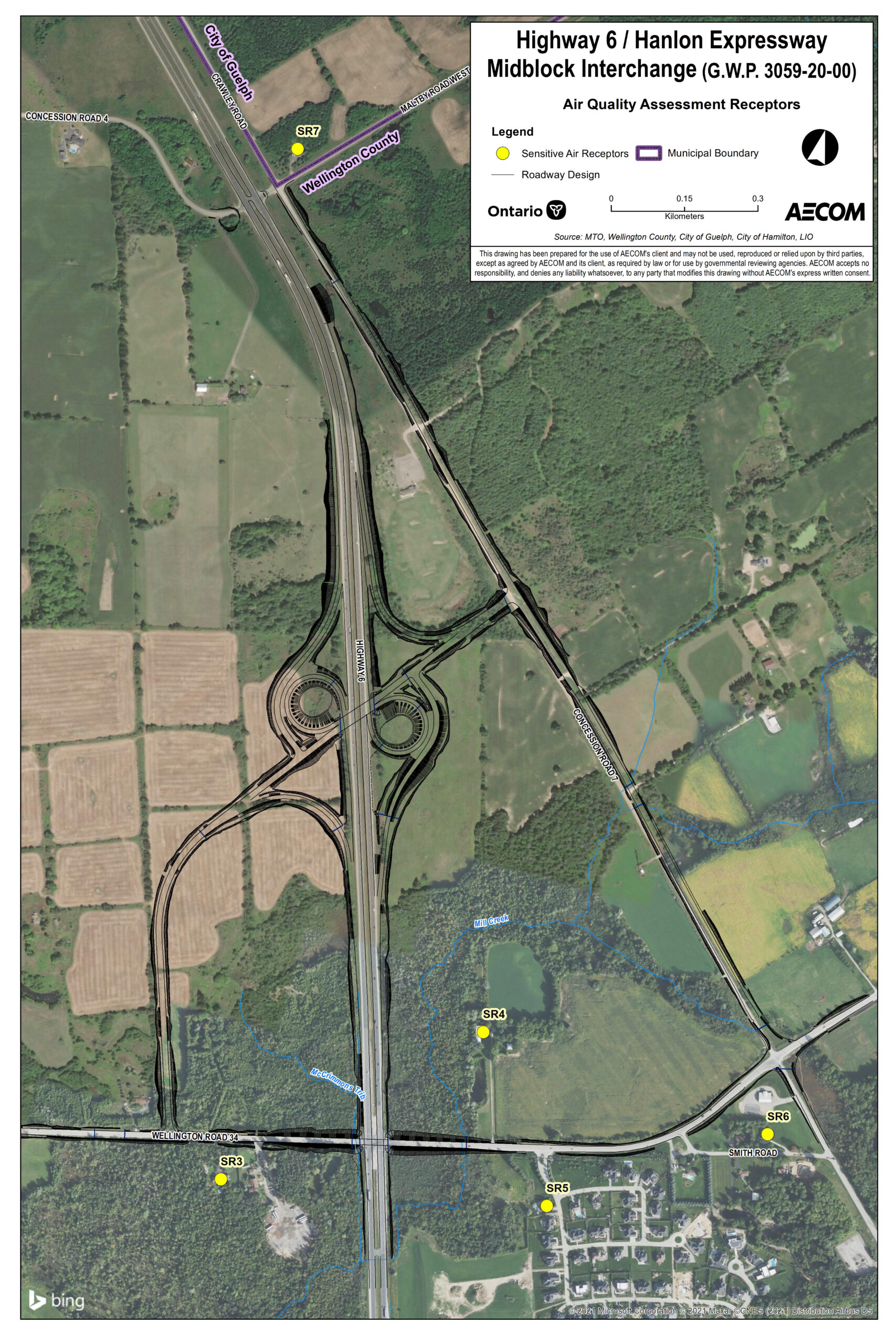Air Quality Impact Assessments
- An Air Quality Impact Assessment has been undertaken in accordance with the Ministry of Transportation Environmental Guide for Assessing and Mitigating the Air Quality Impacts and Greenhouse Gas Emissions of Provincial Transportation Projects, 2020.
- The assessment compares predicted concentrations of air contaminants from vehicle emissions for future (2041) traffic conditions with no highway improvements in place and future (2041) traffic conditions with the highway improvements in place at sensitive receptor locations (residential properties) within the Study Area and a 500-metre buffer (air quality study area).
Key Findings
- A total of 14 sensitive air receptors were investigated for air quality impacts in the assessment.
- There are existing exceedances of some contaminants found in the existing ambient air quality within the air quality study area.
- With the implementation of the Project, the majority of the criteria air contaminants are still expected to be below the respective provincial and federal air quality criteria except for nitrogen dioxide and benzo(a)pyrene.
- Nitrogen dioxide (NO2) and Benzo(a)pyrene are predicted to exceed the federal and/or provincial standards at all identified sensitive receptors within the air quality study area.
- The exceedance of nitrogen dioxide is expected to be due to the anticipated contributions from the Project due to a predicted increase in traffic volumes along Highway 6 North in the future.
- The exceedance of benzo(a)pyrene is expected to be due to both anticipated project contribution and to high levels of existing ambient air quality concentrations of this contaminant within the Study Area.
- Construction related air pollution including diesel combustion, particulate emissions, odour and visible dust may temporarily increase at existing sensitive receptors within the Study Area.
Please refer to the Air Quality Assessment Receptors Map below for the air quality receptors assessed as part of this study.
Click on the map to view a higher resolution plan.
Table of Contents
Potential Impacts
- Increase of air pollution contaminants at nearby sensitive air receptors primarily due to a predicted increase in traffic on Highway 6 North.*
- Temporary increase in air pollution (e.g. diesel combustion products) as a result of construction vehicle emissions and increased traffic due to congestion associated with construction activities.
* Air pollution contaminants assessed include: Nitrogen Dioxide, Carbon Monoxide, Sulphur Dioxide, Particulate Matter (<10 microns and 2.5 microns), Acetaldehyde, Acrolein, Benzene, Benzo(a) pyrene, Formaldehyde, and 1,3 –butadiene.
Mitigation Measures
- An air quality management plan will be implemented during construction to minimize fine particulate release from mobile equipment, materials handling and wind erosion.
- Where possible, planting will be implemented between the source of emission and the sensitive receptor(s) to decrease ground level dispersion of particulates.
- An air quality monitoring plan will be developed and implemented during construction. The monitoring plan provides details on specific monitoring requirements. Monitoring results will be reported to Ministry of the Environment, Conservation and Parks on a regular basis.
Did you know?
By 2051, the population of the Greater Golden Horseshoe is expected to grow to 14.8 million people. Unmanaged growth can have negative impacts on the region’s environment including air quality, water resources and natural heritage resources. Improvement to the existing highway network is key for the safe and efficient movement of goods and people, and to reduce greenhouse gas emissions and other negative environmental impacts.

